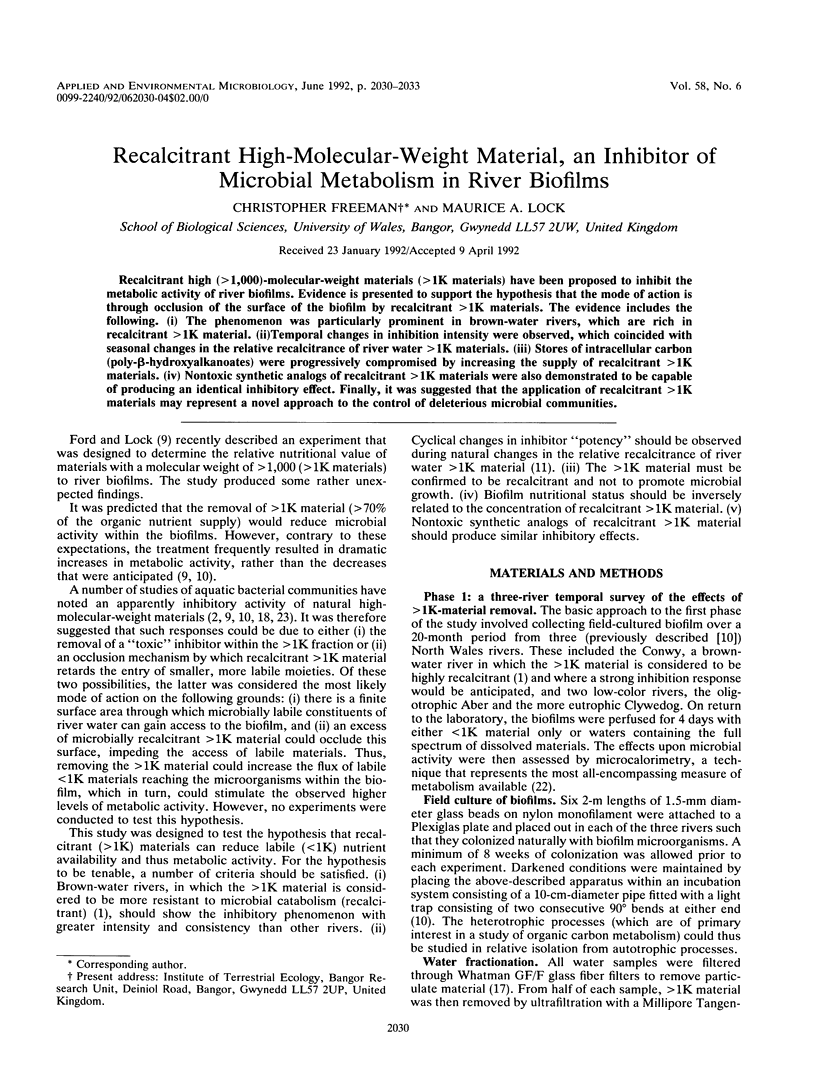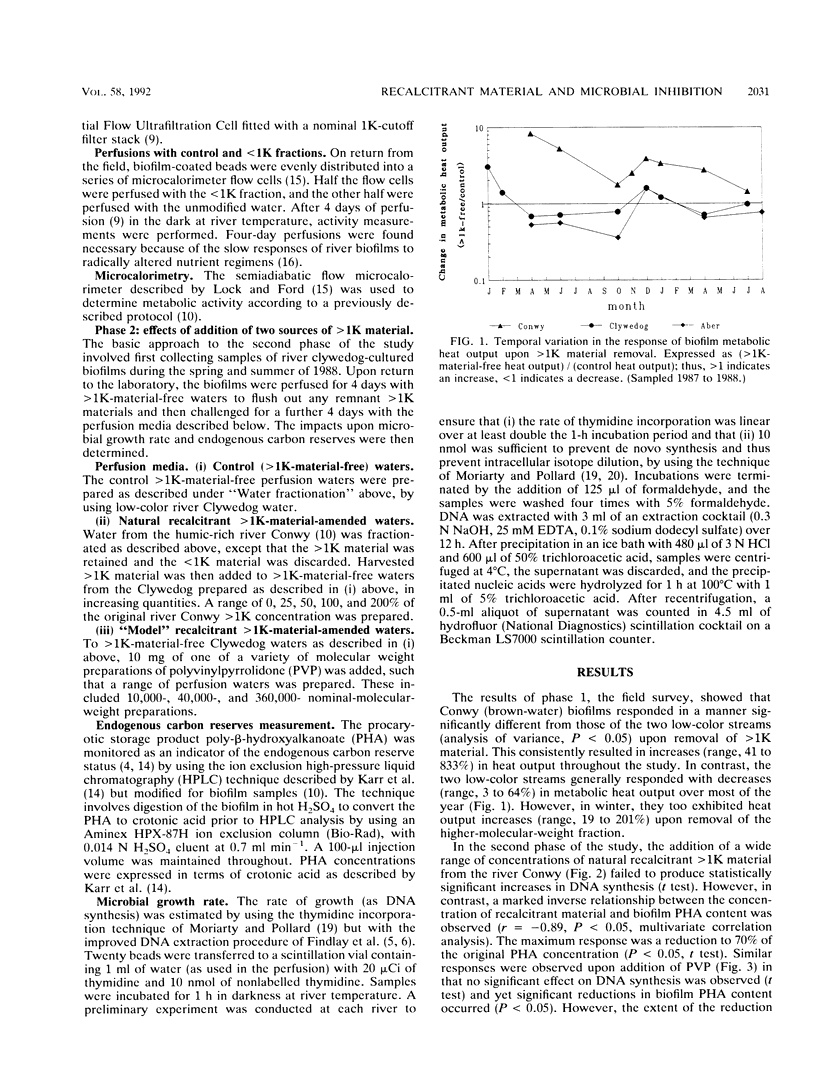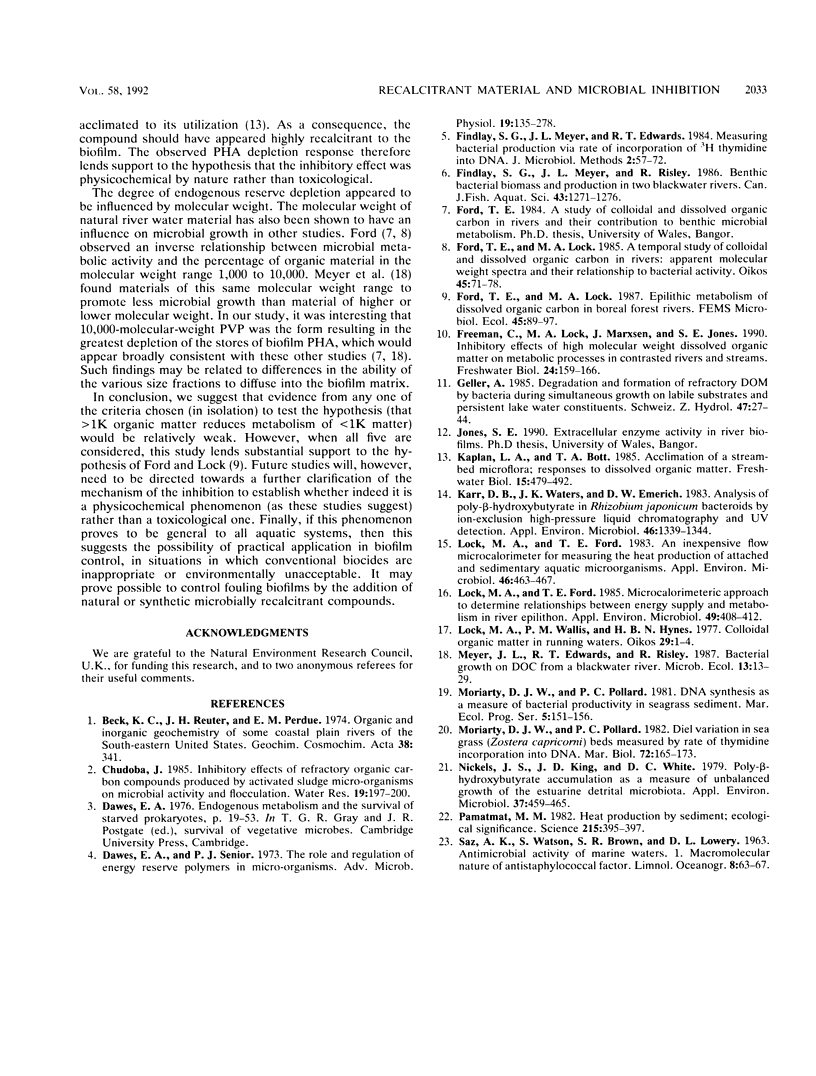Abstract
Recalcitrant high (>1,000)-molecular-weight materials (>1K materials) have been proposed to inhibit the metabolic activity of river biofilms. Evidence is presented to support the hypothesis that the mode of action is through occlusion of the surface of the biofilm by recalcitrant >1K materials. The evidence includes the following. (i) The phenomenon was particularly prominent in brown-water rivers, which are rich in recalcitrant >1K material. (ii)Temporal changes in inhibition intensity were observed, which coincided with seasonal changes in the relative recalcitrance of river water >1K materials. (iii) Stores of intracellular carbon (poly-β-hydroxyalkanoates) were progressively compromised by increasing the supply of recalcitrant >1K materials. (iv) Nontoxic synthetic analogs of recalcitrant >1K materials were also demonstrated to be capable of producing an identical inhibitory effect. Finally, it was suggested that the application of recalcitrant >1K materials may represent a novel approach to the control of deleterious microbial communities.
Full text
PDF



Selected References
These references are in PubMed. This may not be the complete list of references from this article.
- Dawes E. A., Senior P. J. The role and regulation of energy reserve polymers in micro-organisms. Adv Microb Physiol. 1973;10:135–266. doi: 10.1016/s0065-2911(08)60088-0. [DOI] [PubMed] [Google Scholar]
- Karr D. B., Waters J. K., Emerich D. W. Analysis of Poly-beta-Hydroxybutyrate in Rhizobium japonicum Bacteroids by Ion-Exclusion High-Pressure Liquid Chromatography and UV Detection. Appl Environ Microbiol. 1983 Dec;46(6):1339–1344. doi: 10.1128/aem.46.6.1339-1344.1983. [DOI] [PMC free article] [PubMed] [Google Scholar]
- Lock M. A., Ford T. E. Inexpensive flow microcalorimeter for measuring heat production of attached and sedimentary aquatic microorganisms. Appl Environ Microbiol. 1983 Aug;46(2):463–467. doi: 10.1128/aem.46.2.463-467.1983. [DOI] [PMC free article] [PubMed] [Google Scholar]
- Lock M. A., Ford T. E. Microcalorimetric Approach to Determine Relationships between Energy Supply and Metabolism in River Epilithon. Appl Environ Microbiol. 1985 Feb;49(2):408–412. doi: 10.1128/aem.49.2.408-412.1985. [DOI] [PMC free article] [PubMed] [Google Scholar]
- Nickels J. S., King J. D., White D. C. Poly-beta-Hydroxybutyrate Accumulation as a Measure of Unbalanced Growth of the Estuarine Detrital Microbiota. Appl Environ Microbiol. 1979 Mar;37(3):459–465. doi: 10.1128/aem.37.3.459-465.1979. [DOI] [PMC free article] [PubMed] [Google Scholar]
- Pamatmat M. M. Heat production by sediment: ecological significance. Science. 1982 Jan 22;215(4531):395–397. doi: 10.1126/science.215.4531.395. [DOI] [PubMed] [Google Scholar]


